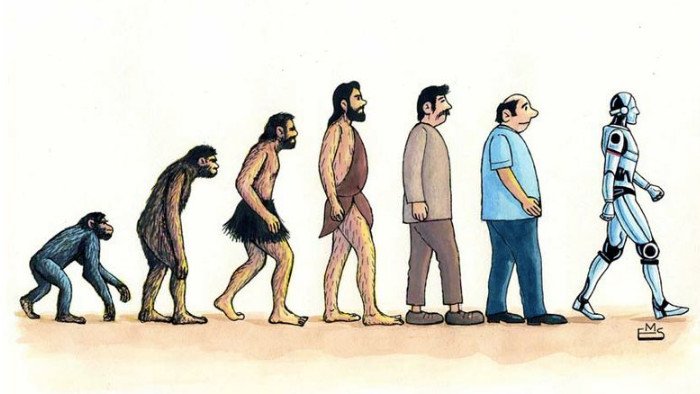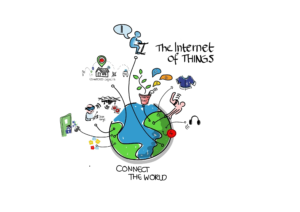Can Robots Replace Humans The Future of Automation
Can robots replace humans? This question, a recurring theme in science fiction and a growing concern in the real world, delves into the future of automation. Automation, in its various forms, has profoundly impacted industries worldwide. From simple assembly lines to intricate surgical procedures, machines have increasingly taken over tasks previously performed by human workers. This article explores the potential for robots to replace humans, examining the benefits and drawbacks, while identifying practical strategies for adapting to a future where automation plays an increasingly important role. We will analyze the current state of automation, highlight case studies, and discuss potential solutions for job displacement. The structure of this article is as follows: we begin by analyzing current trends and historical context; subsequently, we will dive into the impact on the job market; lastly, we present practical steps to prepare for the future.
Understanding the Current State of Automation
Historical Context
The concept of machines replacing humans has been a topic of discussion for centuries, from the early industrial revolution to the modern day. Early iterations of automation, like the mechanical loom, sparked anxiety about job displacement but ultimately led to economic growth and societal transformation. These initial waves of automation forced societal shifts in labor patterns and skill sets. While initial anxieties were significant, these transformations ultimately propelled innovation and created new job roles.
Current Trends
Today’s automation, fueled by advancements in artificial intelligence (AI) and robotics, is different from historical iterations. It’s moving from simple, repetitive tasks to more complex, nuanced functions. We are witnessing a rapid acceleration in the deployment of AI-powered systems in various industries like manufacturing, transportation, healthcare, and customer service. This increased automation efficiency leads to significant cost savings for businesses, impacting profit margins.
Examples of Automation in Practice
Numerous examples illustrate the increasing prevalence of automation. Amazon’s warehouses utilize sophisticated robotics for picking and packing orders, significantly increasing operational speed and efficiency. Surgical robots are increasingly employed in minimally invasive procedures, providing precision and reducing invasiveness. These examples highlight the profound impact automation is having across numerous industries, increasing output and reducing human error rates.
Analyzing the Impact on the Job Market
Job Displacement Concerns
One of the most significant concerns surrounding increased automation is job displacement. As robots and AI-powered systems become better at performing tasks previously done by humans, the demand for certain roles may decrease. This is a critical area of discussion for policymakers and industry leaders. While new jobs are often created, the existing workforce needs to adapt to the rapidly changing job market through education and skill development.
New Roles and Opportunities
While some jobs are lost to automation, the process creates new roles and opportunities that require different skills. These new roles often involve the design, programming, maintenance, and management of automated systems. Engineers, data scientists, and AI specialists are now in high demand. This evolving job market demands a proactive approach to training and education.
Strategies for Adapting to Automation
One strategy for adapting to an automated workforce is investing in education and training programs to equip employees with the skills needed to thrive in this new era. Upskilling and reskilling initiatives are key to preparing workers for roles that are currently being, or soon will be, automated. These initiatives involve updating skill sets to meet the evolving demands of the new labor landscape. This will ensure that the workforce remains competitive and relevant in a rapidly changing job market.
The Future of Work in an Automated World
Collaboration Between Humans and Machines
Instead of replacing humans entirely, the future likely lies in human-robot collaboration. Robots excel at repetitive tasks, while humans bring creativity, critical thinking, and complex problem-solving abilities. The integration of these skills can lead to improved efficiency and productivity. There are also moral and ethical implications to consider in this evolving relationship.
Adapting Educational Systems
Educational systems need to adapt to the changing demands of the job market by incorporating skills training in technology, coding, and analytical thinking. This education will encompass the development of critical skills that will be valuable in an automated world. This approach will create better-prepared individuals with broader skillsets.
The Importance of Continuous Learning
In the face of rapid technological advancements, continuous learning and adaptation are crucial. Employees must embrace lifelong learning to acquire new skills and adapt to evolving job requirements. Continuous learning will be necessary to remain competitive in a dynamic job market.
Addressing Ethical and Societal Implications
The Distribution of Wealth
The increasing automation of tasks raises important ethical questions, including the distribution of wealth. As machines become more productive, how will the benefits of this increased productivity be distributed? Are there policies or mechanisms in place to ensure that the benefits are shared more equitably? This is an ongoing societal debate.
Maintaining Safety Standards
Safety remains a critical consideration as automation increases. How can we ensure safe working conditions and prevent accidents caused by malfunctions in automated systems? Regulations and standards in place are crucial in preventing accidents and fostering a safe work environment.
Considerations for Moral and Ethical Implications
Are there moral and ethical implications for robots making critical decisions in areas like healthcare or military applications? This is another crucial concern that needs careful consideration as automation evolves. Careful consideration of ethics and safety is critical in the integration of automation.
Related Post : How IoT Devices Are Transforming Everyday Lives
Case Studies and Examples
Manufacturing Industry
The manufacturing industry has been one of the early adopters of automation. Many manufacturing facilities use robots for tasks such as welding, painting, and assembly, significantly increasing productivity and reducing costs. Examples include robotic arms performing intricate tasks and automated assembly lines.
Strategies for Workforce Adaptation
Reskilling and Upskilling Initiatives
Governments and industries need to invest in reskilling and upskilling programs to equip workers with the skills needed to thrive in an automated future. This may include training in areas like data analysis, programming, and AI. This will help prepare the workforce for the roles that automation is creating.
Case Studies and Examples
Service Industries
The service sector is also rapidly adopting automation, with chatbots and AI-powered customer service systems becoming increasingly common. This has an impact on customer service, streamlining processes and reducing human error. This will also improve the efficiency of customer service teams by handling routine tasks, freeing up human employees for more complex interactions.
The Role of Government and Policy
Policies to Support Workforce Transition
Governments need to play a crucial role in supporting workforce transition. This includes creating policies to support retraining and education, and potentially providing unemployment benefits and financial support for workers during the transition period. Governments play a significant role in providing a safety net and promoting a fair transition in the labor market.
The Role of Education and Training
Integrating Automation in Curricula
Education institutions must adapt their curricula to incorporate the knowledge and skills necessary to thrive in an automated future. Students must learn about robotics, AI, and automation concepts to become ready for future roles. There must be a fundamental adjustment in educational curriculums to keep pace with the shifting needs of the market and workforce training programs to upskill existing employees and prepare young people for new roles in automation and related industries. This can create a better-prepared workforce that is capable of meeting the evolving requirements of the automated future and will also help address the skill gaps that will become more prominent in the job market during this time of transition to automation.
In conclusion, the future of automation and the potential for robots to replace humans is complex and multifaceted. While automation undoubtedly brings significant benefits in terms of efficiency and productivity, concerns remain about job displacement and the need for workforce adaptation. The key lies in finding a balance between embracing technological advancement and ensuring a just and equitable transition for all. To learn more about the practical applications of automation in various sectors, explore our latest insights on the topic. Click here to discover how to prepare for this future!
Share this content:














Post Comment